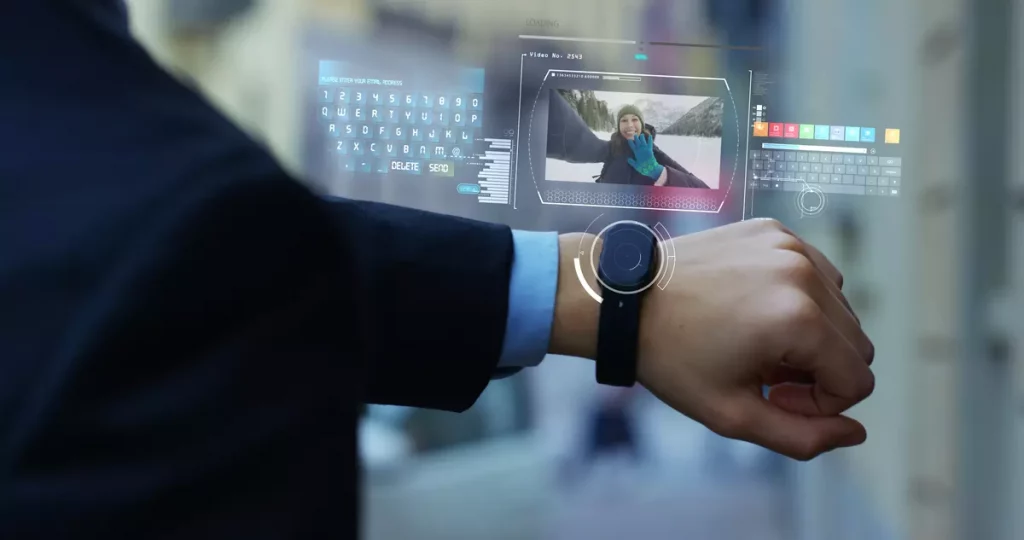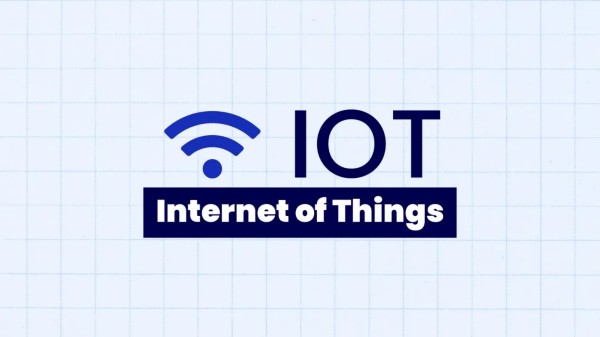Written
by edgeuno tech
Jun, 21, 2023
Last modified on Jun, 26, 2023 at 11:39 am
Internet of Things: Considerations and Definitions about this Technology
The concept of IoT or Internet of Things is something that you may have heard before. However, few people understand what this actually means in our lives today. We are connected to electronic devices in almost all areas of our daily lives and now almost all machines are connected, learning our needs, desires and offering us everything we want as if they were reading our thoughts. But how does that happen? Is it magic?
It is not magic. The concept of IoT is based on devices that work with AI (Artificial Intelligence) and Big Data (massive amount of data provided by users on social media, websites, etc.), which are interconnected, collecting, analyzing, and learning about our lifestyles. When all this started, it was like teaching a child to walk, think and organize everything he saw or heard.
Do you remember the world before the internet? There are fewer and fewer people who remember what it was like. The world worked differently. We wrote letters when we missed someone, rented movies, searched, and studied at the library, played video games like Pac-Man in an arcade or on a console, or called someone from a landline.
Technology has come a long way and gone through many changes in the last 30 years, most of the biggest changes coming in the last 10 years. Today everything is connected, and all the answers are in your hands. The concept of privacy has also evolved along with technology. Every interaction we have on the internet leaves a trace, and not only on the internet, but we are also being filmed and monitored all the time no matter where we are. There is no way to hide.
If you do not know about Alexa or Siri yet, chances are you will very soon. And maybe they will become friends because of the interactions you will have together. Let’s look now to understand what this all means.
What is a Smart Card?
Smart Cards allow devices to be identified and allow connectivity between them. Perhaps you are using one of those to read this article if you have a smartphone in your hands. If you have used an EMV chip card (this is explained below) to pay a bill or make a bank transaction, or by connecting your smartwatch, to open a hotel room door where you are or allow entry into a building.
What is an EMV chip?
An EMV (Europay, Mastercard, and Visa) Chip is a processor that is housed inside a Smart Card, this technology provides security and allows data storage. As the name says, this chip was developed by Europay, Mastercard, and Visa.
What is wearable technology?
It can be a watch, a ring, a shirt, a shoe, a belt, glasses, or anything that can be connected to a device. What are you using now? Maybe a Smartwatch to read your emails, messages, receive calls, surf the internet, count steps and heartbeats, pay your bills, and other banking transactions.

How does technology shape our human identity?
Sensors are in various devices to detect your voice, face, iris of the eye, fingerprints, or the palm of your hand. Each human being is different, the biometric characteristics of each body are unique. Technology already knows this and uses it to identify us. These systems have more security than a password.
What is a Beacon and what is it used for?
Beacons are small devices that emit short-range Bluetooth signals, these signals can be received by other types of devices and establish communication. When the pandemic was just starting, several biosecurity measures were established, one of which consisted of measuring the temperature of people who entered a closed place. Today, in some places, they have adapted this measure with a camera with an integrated sensor that measures your temperature automatically, you can also see your photo and other details.
Beacon devices serve to attract the attention of consumers and thus organize the products in the store as convenient. When you walk through a shopping center, this sensor will detect all the spaces of a store or corridors where people hardly ever walk and where the store has more daily traffic.
What is the technology maturity level (TRLs)?
The level of maturity of the technology or TRL – Technology Readiness Levels is a hierarchical scale that goes from 1 to 9 and organizes the technology according to its degree of difficulty. The more difficult it is to develop, the larger the number on this scale, and of course the more difficult it is to do. Technological maturity is the end state of digital transformation and the state that companies aspire to achieve.
What is M2M – Machine to Machine?
Machine to Machine is about communication between machines without human intervention. This form of communication brought a great revolution, it was a highly discussed topic since, to achieve this connection between one machine and another, artificial intelligence plays a particularly important role. Are there limits to technology? No one knows, but we can be sure that it advances exponentially over the years. A clear example of this is the Metaverse. The metaverse is a reality and there are many Metaverses in development and creation. Do you want to know a little more about that? Find more information about the Metaverse here.
What is the IoT ecosystem?
The IoT ecosystem is the interaction between machines, connectivity, Big Data, platforms, and applications that use Artificial Intelligence. All these factors work together to provide connectivity in all the devices we use every day, which collect, process, and exchange information.
Organizations that care about copyright and standardization
When creating or developing an application, functionality, or tool, it is necessary to register that product to avoid illegal copies and prove who is the legitimate owner of that patent. For that, some organizations take the option of copyrighting. These companies also investigate whether the idea, product, or technology already exists or has already been registered. If this is not the case, the owner can register it and claim it as their own. In some cases, it is just to help standardize a product, program, device, etc.
Some of those organizations are:
- INPI – National Institute of Industrial Property
- WIPO / WIPO – World Intellectual Property Organization
- PCT – Patent Cooperation Treaty
- CUP – Paris Union Convention
- TIA – Telecommunications Industry Association
- Wi-Fi Alliance
- IPSO – Internet Protocol for Smart Objects
What is the biggest challenge in IoT?
- Connectivity: One of the biggest challenges facing IoT is connectivity, providing Internet to each device to achieve a stable and fast connection. In some places in Latin America, where there is no internet connection, or if there is, it is expensive and not accessible to the entire population. According to this, 5G technology can be an alternative for this connectivity problem. Read more about 5G technology here.
- Administration: It is necessary to manage all the information received by the devices, control access, and supervise all the technologies used in the process.
- New languages and applications: It is important to develop programming languages to keep up with the changes in technology.
- Standardization: Some specifications and characteristics of IoT technologies need to be standardized so that all equipment can connect. The idea is to have technology without a closed code that can give access and connectivity to all the equipment.
- Security: Ensuring the security of users and their information is a factor that still needs development, revision, and standardization.
- Protection laws: As important as security is ensuring that the data is protected by laws to prevent theft such as intellectual property, patents, and new trademarks.
What opportunities does the Internet of Things provide?
- E-Commerce: Electronic commerce is the new way to sell, buy and deliver any product or service. With the pandemic, this type of consumption grew a lot.
- Monitoring: At this time there are many tools supported by IoT, which help monitor: health, energy, sanitation, smart buildings and houses, smart transportation, surveillance and security, environment, agribusiness, robotics, etc. All this becomes a reality after the mandatory confinement in the COVID-19 pandemic.
What are the IoT threats?
- Information security: Is all our data protected when we connect to the internet? Is it possible to trust a site, application, or device? There is no guarantee of it. However, technology is here to stay, and the best option is to trust that the best is being done and implement security measures against our data being compromised.
- Redundancy of Connectivity: Are we sure that everything is connected all the time? Online, on time, full time? Probably not. Some links have redundancies if they fail at some point, sometimes to re-establish that connectivity again takes much longer than expected. An example is submarine cables. If one of them is cut or interrupted, recovery can take a few days or sometimes weeks.
Are you living online or offline? Even when you are offline, do you keep thinking about how to put the best moments on social networks? Do you live real moments in your life? If not, do you do this quest in virtual life? Do you use technology to improve your work, studies, and leisure?
There is no certain answer for that, the truth is that we live in a world where technology grows and develops day by day and we have no way to run away from it. However, finding the right balance in our lives is the challenge to enjoy what modern life can offer us.
 Back to Blog
Back to Blog



